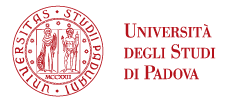Chemical NIRS - XRF Lab
The Chemical – NIRS - XRF Lab conducts chemical, NIRS and XRF analysis to test zootechnical food, pet-food and human food such as eggs, meat and dairy products. It is also used by zoothechnic and agricultural companies. The goals of the lab are:
- Nutrition control
- Food health and hygiene
- Improving activities
This is done with a specific view towards 4.0 agriculture and sustainability. Analytical chemistry and fast predictive techniques are used for all tests. Chemical tests such as bromatological and HPC analysis, gas and chromatographic analysis and ELISA tests are caried out to identify the chemical composition and nutritional, organoleptic and physical characteristics of foods.
Fast predictive technologies are established at this lab, and NIRS and XRF analysis is used to identify the chemical and mineral composition of animal and vegetal moulds.
NIRS technology allows precise and accurate determination of vegetal and animal products’ chemical compositions, which is based on the application of predictive equations developed at the lab. The technique uses organic material’s ability to assimilate infrared radiation, and this ability allows a product’s fingerprint to be obtained. The success of the analysis depends on the quality of the predictive equivalence, which is a consequence of the correct development of a database able to represent and clarify the variability of samples coming from the landmark. The MAPS lab’s NIRS tools and database come from two decades of research, and they enable the analysis of principal categories of products and allow their components to be determined.
Besides the over-the-counter tools used in the lab, the staff have also developed and applied predictive equations for portable instruments that can be used by companies to reduce waiting time for analysis. Through these NIRS portable instruments, the lab has developed and patented algorithms that allow it to differentiate the quality of a product on the basis of various parameters.
Through XRF (X-ray fluorescence) tools, the lab can determine mineral elements (micro and macro) for vegetal- and animal-origin mould. The XRF technique, as the NIRS one, uses predictive equivalence on the basis of the employment of standard certified samples. To do this, the sample is ground and pressed until it forms a compact pill. After low-energy X-ray exposure, which is not dangerous to the environment, the different mineral elements are quantified.
The advantages of these predictive techniques are substantial. The reduction of the samples’ preparation cut the consumption of reactives that could pollute the environment, be dangerous for operators and contain the time to attend for the analysis datum. The cost of analysing a sample in such a way is also lower than it would be using analytical chemistry. This permits more samples to be analysed and reduces sampling error in the field thanks to the rise of the sample representativity.
The Chemical—NIRS—XRF lab to optimise the quality of results and to compare with the best international centres participate to ring test so as to be always more accurate and precise in the development of analytic data. The expertise of the staff can be seen in their publications, collaborations with other institutions and their contribution to R&D projects.
Chemical—NIRS—XRF Lab staff
Scientific Expert and Manager
Prof. Antonella Dalle Zotte
e-mail: antonella.dallezotte@unipd.it
Tel: +39 049 827 2640
Technical Manager
Dr Massimo Mirisola
e-mail: massimo.mirisola@unipd.it
Tel: +39 049 827 2584
Per Analisi HPLC, Gascromatografia e Fluorimetria
Other professors and technicians
Dr Sandro Tenti
e-mail: sandro.tenti@unipd.it
Dr Serva Lorenzo
e-mail: lorenzo.serva@uinpd.it
How to bring samples to the lab
Please contact the lab for information on how to bring samples to the lab.
Lab hours
Mon to Fri, 08.30 - 13.00; 14.30 - 16.30
For more information, please contact:
Laboratorio Chimico-NIRS-XRF
Edificio Stecche – Stecca I - Agripolis, Viale dell’Università 16 – 35020, Legnaro (PD)
Tel. +39 049 827 2584
e-mail: laboratoriochimico.nirsxrf.maps@unipd.it





